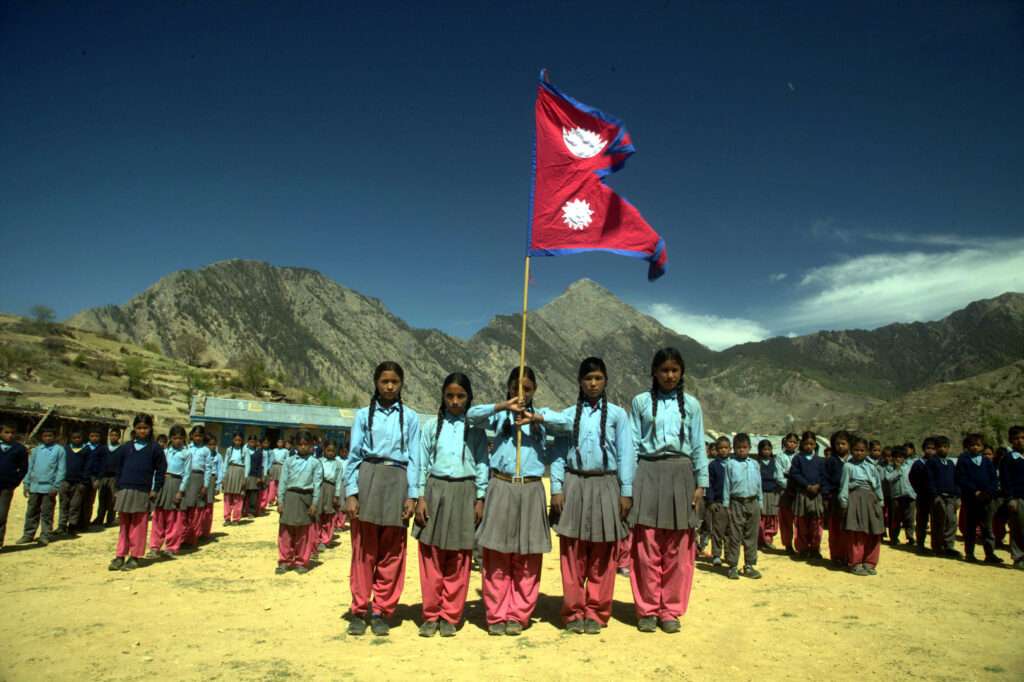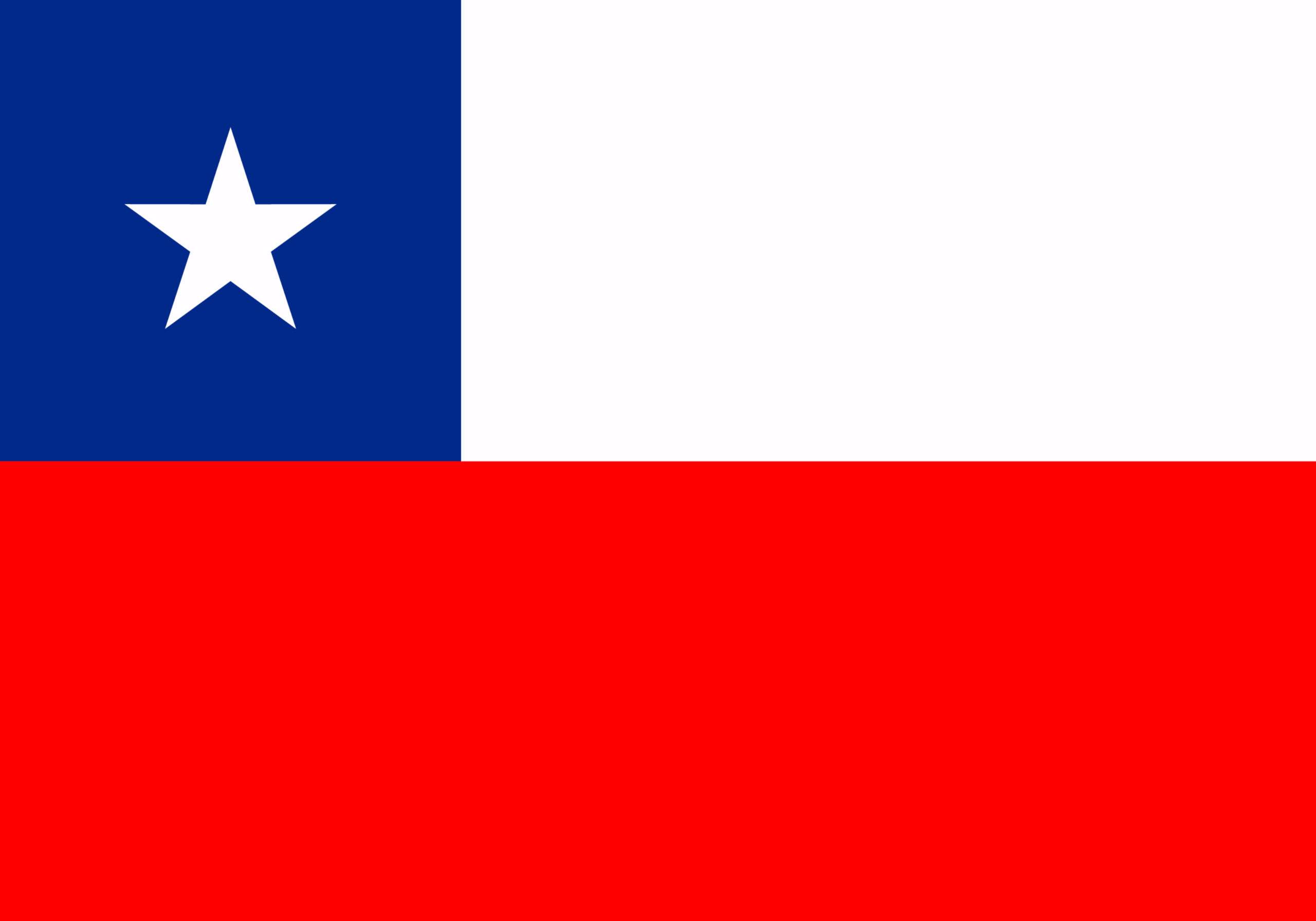Flags are an important part of a country’s identity, representing its history, culture, and values. The flag of Nepal is one of the most unique and interesting flags in the world, with a rich history and symbolism that reflects the country’s deep-rooted traditions and cultural heritage. In this article, we will delve into the fascinating history of the Nepalese flag, exploring its design, meaning, and significance.
Overview of the Flag of Nepal

The flag of Nepal is a rectangular shape that features two triangles stacked on top of each other. The upper triangle is blue, while the lower triangle is red. The two triangles are separated by a white stripe that represents peace and harmony.
The emblem at the center of the flag depicts the moon and the sun, with eight rays emanating from each. The moon represents the calm and serene nature of the Nepalese people, while the sun symbolizes their fierce and unyielding spirit. The eight rays on each side represent the noble eightfold path of Buddhism, one of the major religions practiced in Nepal.
The History of the Nepalese Flag
The history of the Nepalese flag dates back to the 18th century when the country was ruled by the Shah dynasty. The first Shah King, Prithvi Narayan Shah, is credited with unifying the various kingdoms of Nepal and establishing the country as a sovereign state. He introduced a new flag that consisted of a red rectangle with a white emblem at the center.

Image Source: Facebook
The emblem was a combination of two symbols: the sun and the crescent moon, which represented the royal family’s ancestry. Over the years, the flag underwent several modifications, with the addition of various symbols and designs. In 1962, King Mahendra Bir Bikram Shah Dev introduced the current design of the flag, which remains in use to this day.
The Meaning and Symbolism of the Nepalese Flag
The Nepalese flag is rich in symbolism, with each element representing a specific aspect of the country’s culture and history. The two triangles represent the Himalayan Mountains, which dominate the landscape of Nepal. The blue triangle represents the sky, while the red triangle symbolizes the fertile land and the blood of those who fought for Nepal’s independence.
The white stripe that separates the two triangles represents the peaceful coexistence of the country’s diverse ethnic and religious groups. The emblem at the center of the flag, which depicts the sun and moon with eight rays emanating from each, represents Nepal’s commitment to the noble eightfold path of Buddhism. The sun and moon also represent the hope that Nepal will enjoy eternal existence, while the eight rays symbolize the country’s struggle for freedom and independence.
The Unique Design of the Nepalese Flag
The design of the Nepalese flag is unique and distinctive, setting it apart from other flags around the world. The two triangles stacked on top of each other represent the shape of a mountain, with the blue triangle symbolizing the sky and the red triangle representing the earth. The combination of these two elements reflects the close relationship between heaven and earth in Nepalese culture.
The use of a non-rectangular shape is also unusual, with most flags featuring a rectangular design. The use of a non-rectangular shape reflects Nepal’s independent spirit and its desire to stand out from the crowd. The flag’s striking design has earned it a place among the most recognizable flags in the world.
The Nepalese Flag and Its Role in National Identity
The Nepalese flag plays a crucial role in the country’s national identity, serving as a unifying symbol for the diverse ethnic and religious groups that call Nepal home. The flag represents the country’s history, culture, and values, reminding Nepalese people of their shared identity and common goals.
The Nepalese flag is also an important symbol of the country’s independence and sovereignty. Nepal has a long history of foreign rule, with the country falling under the influence of various empires and kingdoms over the centuries. The flag represents the struggle for independence and the country’s determination to maintain its sovereignty.
The flag is also an important symbol of Nepal’s position in the world. Nepal is a small, landlocked country located between two powerful neighbors, India and China. The flag serves as a reminder of Nepal’s unique identity and its place in the world, representing the country’s desire to maintain its independence and autonomy.
The Nepalese Flag in Popular Culture

Image Source: IMDB
The Nepalese flag has become a popular cultural icon, appearing in various forms of media and entertainment. The flag has been featured in movies, television shows, and video games, with its unique design and symbolism appealing to audiences around the world.
The flag has also been used as a symbol of protest and resistance. In 2015, Nepal experienced a devastating earthquake that killed thousands of people and destroyed much of the country’s infrastructure. In the aftermath of the disaster, the Nepalese flag became a symbol of hope and resilience, with people displaying the flag to show their support for the country and its people.
To sum up, we can say that the flag of Nepal is a unique and fascinating symbol of the country’s history, culture, and identity. The flag’s design and symbolism reflect Nepal’s deep-rooted traditions and its struggle for independence and sovereignty. The Nepalese flag serves as a unifying symbol for the diverse ethnic and religious groups that call Nepal home, reminding them of their shared identity and common goals.
The Nepalese flag has become a popular cultural icon, appearing in various forms of media and entertainment. It has also been used as a symbol of protest and resistance, representing the country’s resilience and determination in the face of adversity.
Overall, the flag of Nepal is a powerful and inspiring symbol of a country that has overcome many challenges and continues to strive for a better future. Its unique design and rich symbolism make it a truly remarkable national symbol, one that will continue to inspire and captivate people around the world for years to come.
About Nepal

Image Source: Nouah’s Ark
Nepal is home to diverse cultures and ethnic groups, with the Nepali language being the most commonly spoken. The capital city of Nepal is Kathmandu, which is also the largest city and a major cultural center of the country.
The most notable feature of Nepal is its breathtaking mountain ranges, with the Himalayas being the most famous of them all. Eight out of ten highest peaks in the world are located in Nepal, including the world’s highest peak, Mount Everest. This makes Nepal a popular destination for trekkers and mountaineers from all over the world. In addition to the mountains, Nepal is also known for its wildlife, and the country has several national parks and reserves that are dedicated to preserving rare and endangered species.
Nepal’s economy is mainly based on agriculture, with rice, wheat, and maize being the primary crops. The country is also famous for exporting handicrafts and textiles such as carpets, pottery, and metalwork. In recent years, Nepal has been making efforts to boost its economy by developing its infrastructure and attracting foreign investment. Despite facing challenges like political instability and natural disasters, Nepal continues to remain resilient and culturally rich, making it a fascinating and beautiful country to visit.
By: Priyanka Shah



